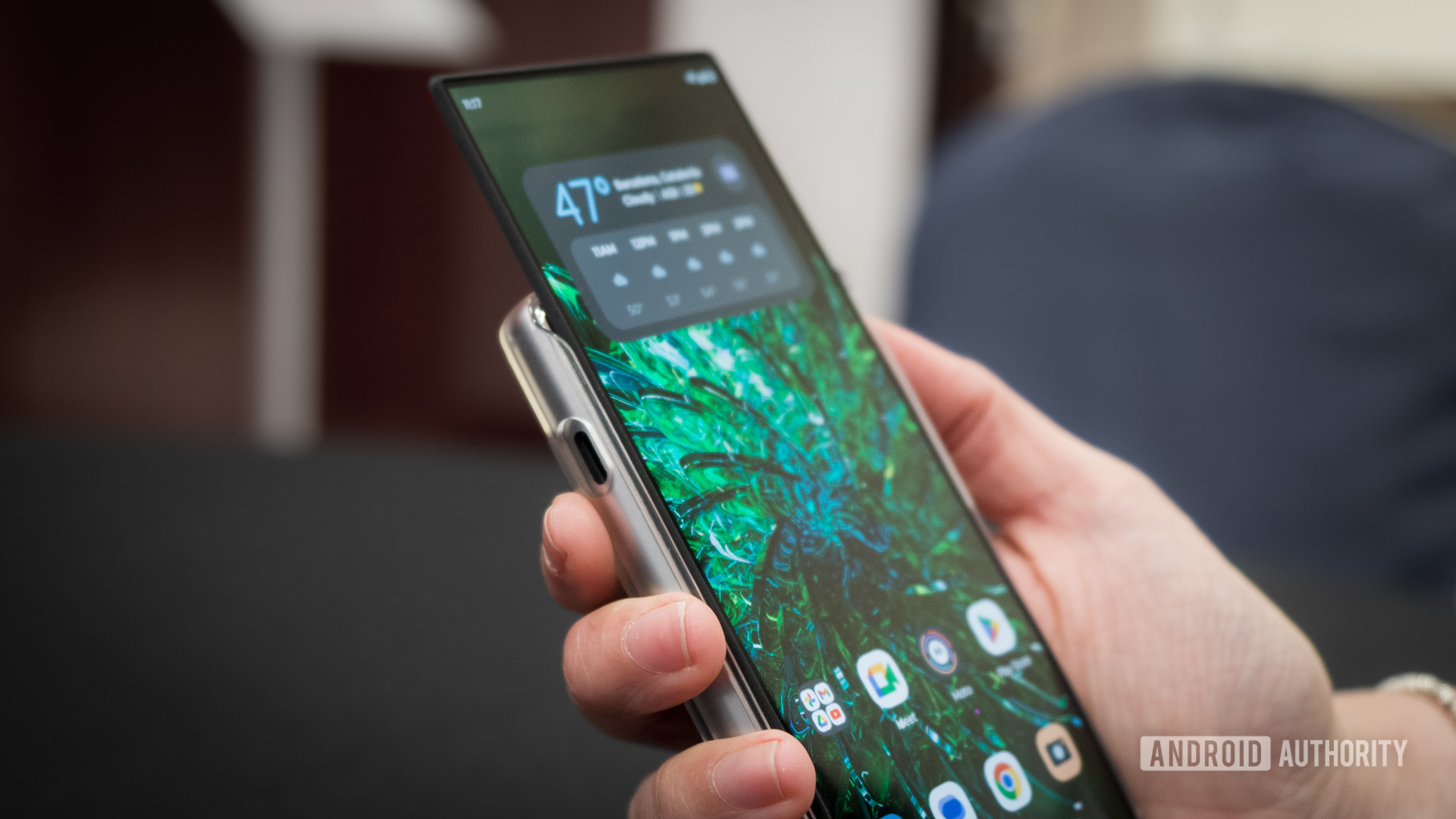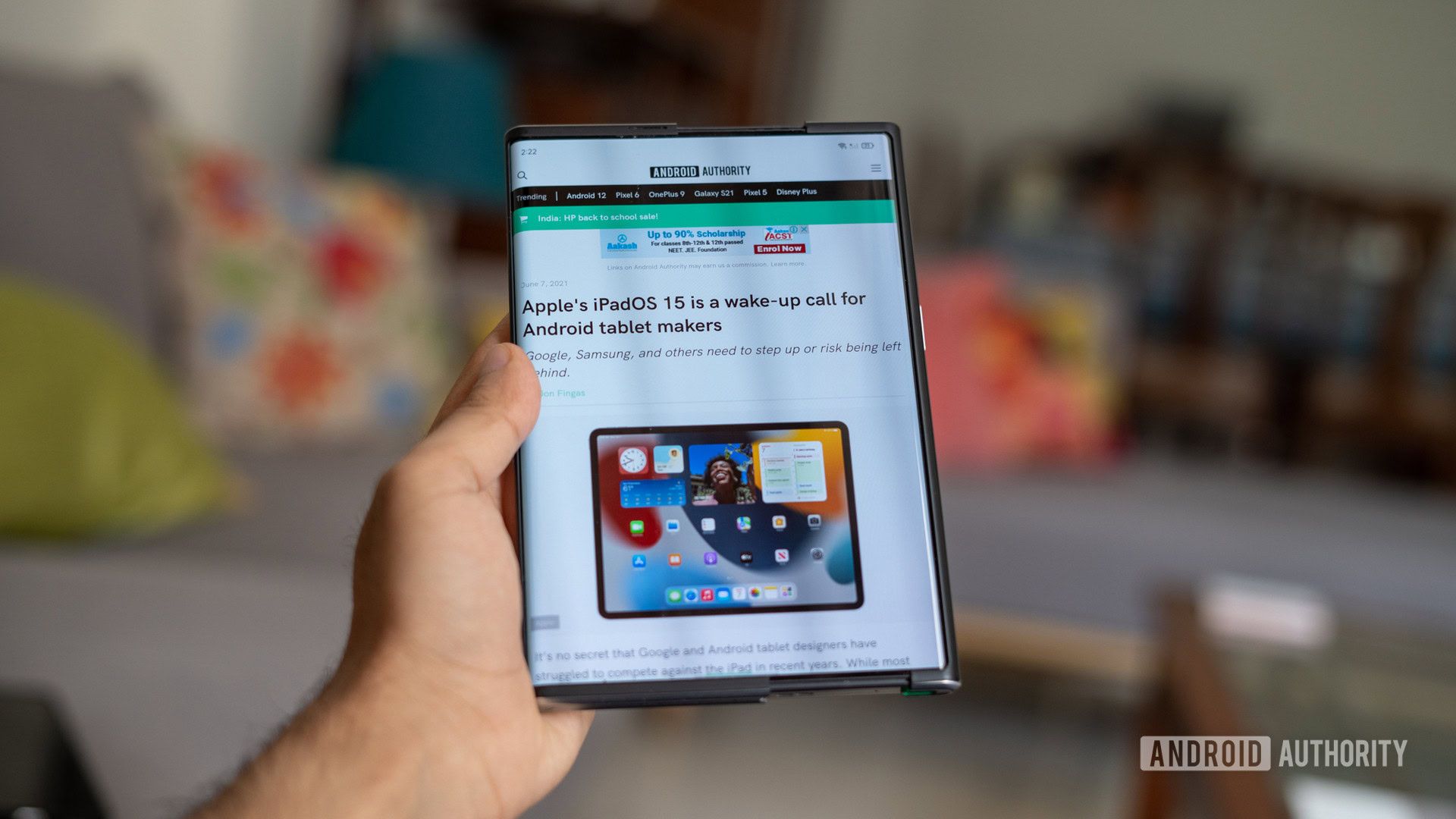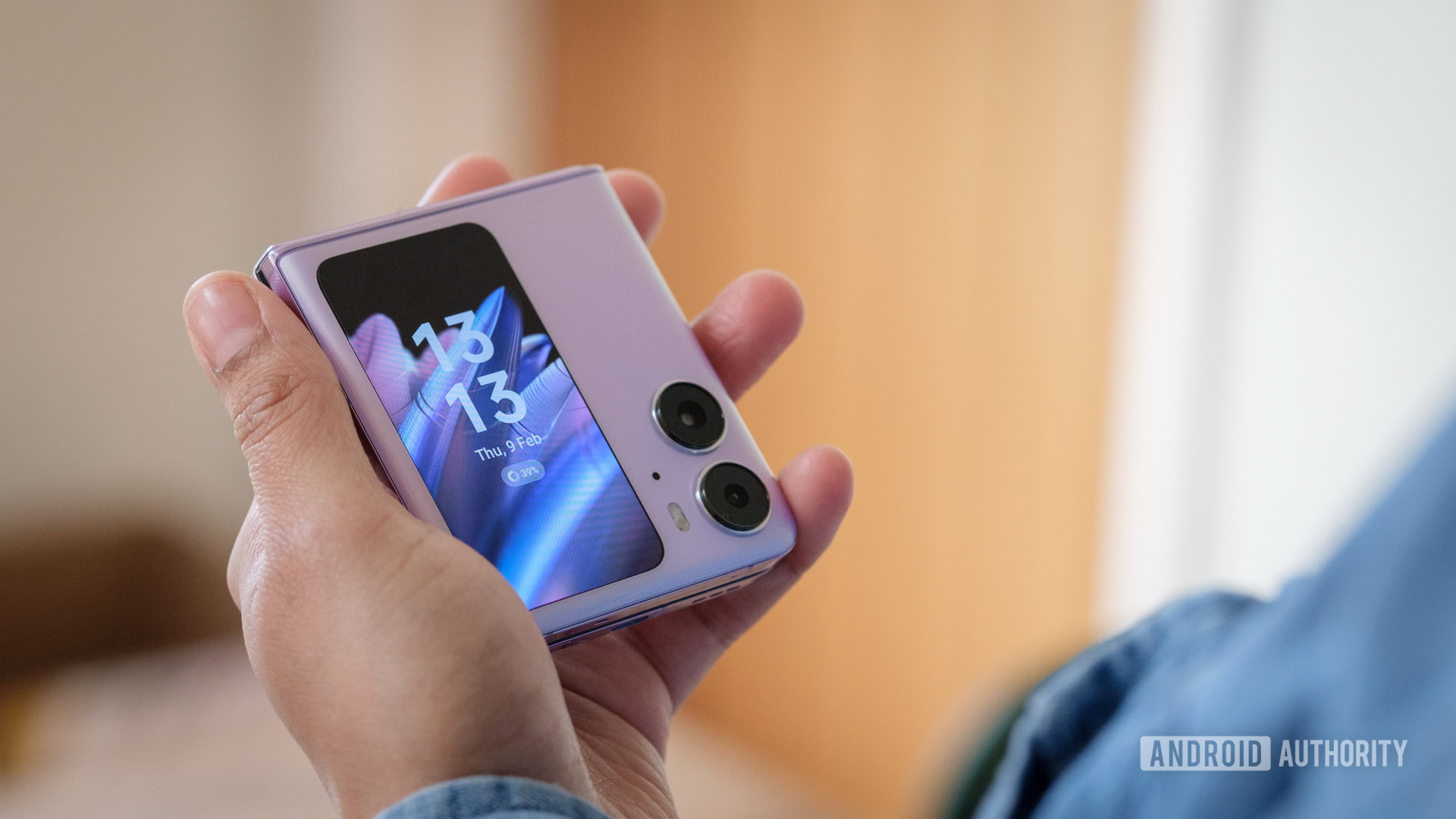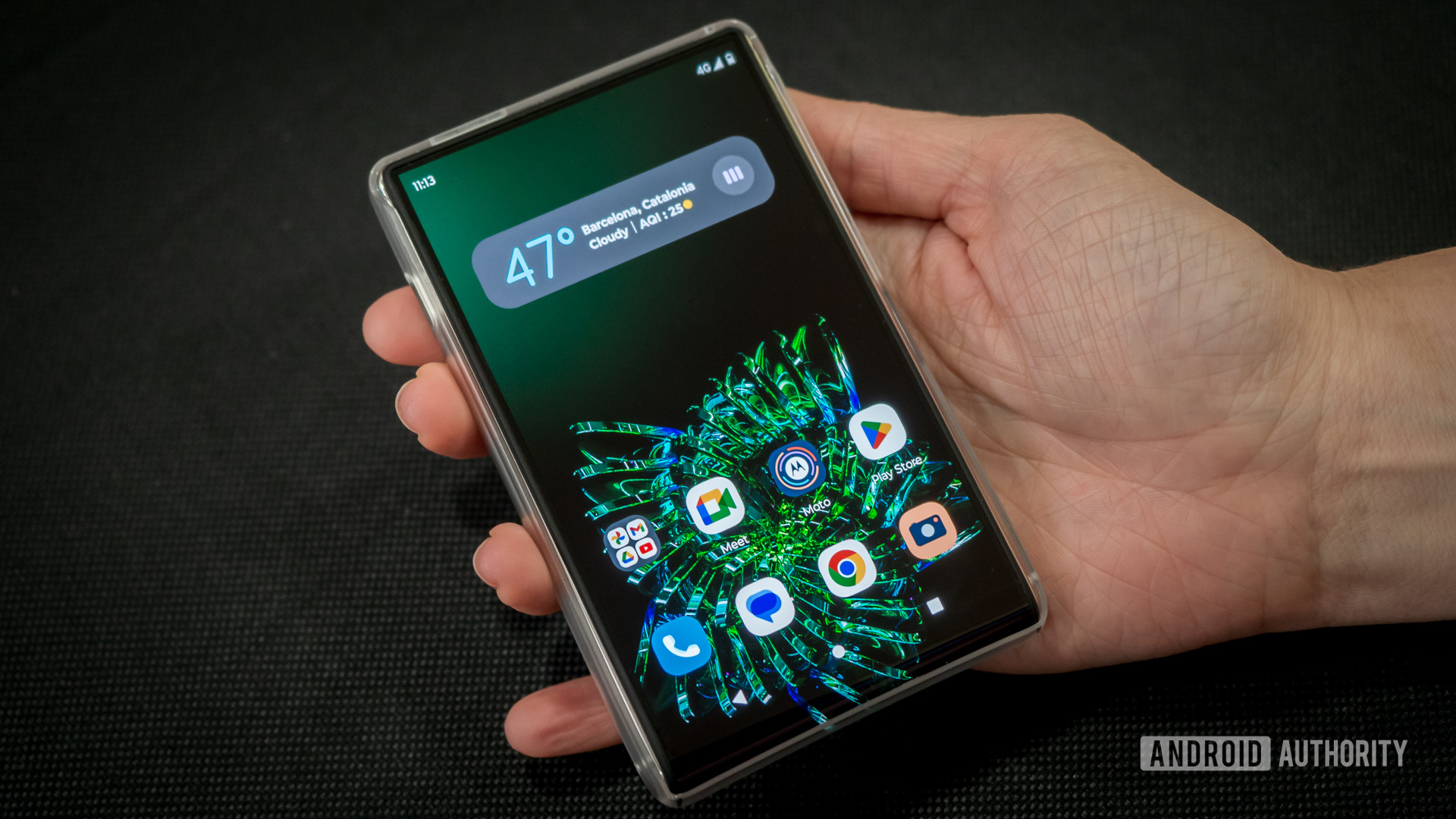Affiliate links on Android Authority may earn us a commission. Learn more.
Small phones are rare nowadays, but rollables could change that

Small modern smartphones are a rare breed these days. Brands are scrambling to fit the largest possible panel in the largest brick shape that could still be held by a human hand. That’s why we often do a double-take when we see any new smartphone with a display smaller than six inches. But there’s one evident solution that could veer the ship again towards smaller form factors: rollable phones.
Rollables are the break small phones needed

We’ve been seeing rollable concepts of smartphones for several years now. LG had its infamous rollable ready to roll to market before it shut down its smartphone division, the OPPO X was shown off a couple of years ago, and TECNO made a concept rollable and foldable phone. All of these, however, are based on a tall slab smartphone form factor that expands horizontally to provide an even larger squarish screen.
This changed last week when we saw the small Motorola rizr concept roll up to reveal a taller display. What Motorola did with the rizr is emulate its older, sliding phone series, which started with a tiny phone and slid up to show a T9 keypad. The new rizr concept takes this to the next level by rolling its display from the back to the front, to expand it vertically. It goes from five inches when rolled back to 6.5 inches when rolled up.
The rizr completely changes the equation for small phones. The first time I saw its display roll up, it felt like magic. It’s been a while since I’ve had this sense of awe with smartphones. And yet it also felt completely rational — why had we not thought of this before?
A rollable is the most sensible solution to the compact phone or large display dilemma. You get to have both!
Putting durability issues aside for a moment, a rollable form factor is the most sensible solution to the compact phone or large display dilemma. You get to have both! It’s a pocketable device with a usable screen as is, but it can give you more screen estate when you need it. Something like the rollable rizr could easily fit in my microscopic women’s jeans pockets without making me feel like I was compromising and limiting myself to a fun-size display all the time. I’d know I could get more screen on demand.
Know when to roll’em, know when to fold’em

“But Rita,” I hear you say, “that’s already possible with foldables. Just look at the Galaxy Flip 4 and, more generally, the success of Samsung’s Flip series.” And you’d be absolutely right.
Clamshell foldables are another way of solving the pocketability versus screen size conundrum, and they’re clearly picking up steam among smartphone buyers. They do come with two major inconveniences, though: thickness and outer display usability. For now, no flip phone has managed to solve either of these. The Oppo Find N2 Flip gets close, but it’s still almost twice as thick as other phones and you can’t access all features on the outer display — despite how much larger than Samsung’s it is.
Despite some durability and component concerns, rollables look like the superior smartphone design to me.
That’s not to say that rollables have everything figured out yet — or we’d already be seeing them in every store. Durability is clearly a major concern. The motorized rolling system and the thin exposed display part that rolls up or sideways are obvious weak points. Plus, manufacturers would have to solve the issue of space. How do you fit a large enough battery to drive a (temporarily) large display and a powerful processor, plus a modern camera setup in a smartphone that’s two-thirds the size of any other?
The first generation or two of rollables are bound to suffer from these quirks, just like the first few clamshell foldables weren’t perfect. But there’s little doubt in my mind that I’m looking — for now — at a superior smartphone design. (I say this with the asterisk that other form factors may change my mind in the future, or clamshells could get thinner with a more usable outer display.)
Do you prefer foldable or rollable phones?
Is this the resurrection of the small phone?

I’m old enough to remember how large the first mobile phones were (and their pop-up antenna), then how they got progressively smaller as components shrunk and became more powerful. Smartphones pushed the sizes up and up again due to the need for a large, content-ready display, but it feels like we’re about to go through another miniaturization phase now.
Foldables and rollables are emerging as viable small phone solutions. We just need the components to catch up.
Foldables, rollables, slidables, and other form factors are slowly emerging as viable small phone solutions. Take a large display then fold it or roll it or slide it — just give it a smaller footprint in any way — and you still have a screen to enjoy your content on but that stows away when not needed. Rollables have the advantage of giving you a better starting point than foldables which, by design, hide the display inside when they fold. We just need the rest of the components to quickly follow along.
Just a few years ago, foldables were concepts that everyone was doubtful about. Yet here were are now, looking at them as a successful form factor and the benchmark against which any future flexible phone will have to compare. So I can easily imagine a future where we just carry a small 5-inch display in our pocket, but could expand it twice or thrice to reveal a much larger tablet-like canvas. Fun times ahead.